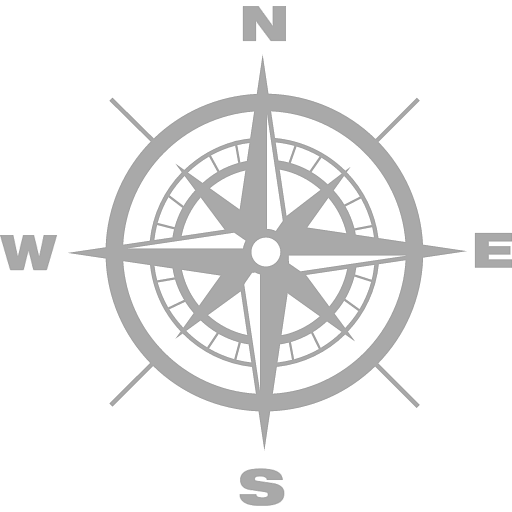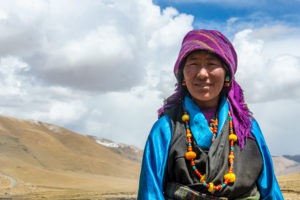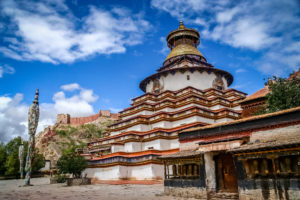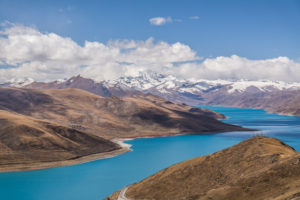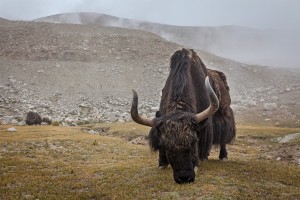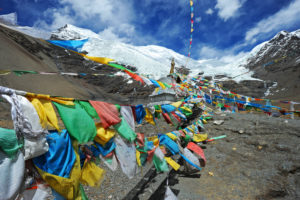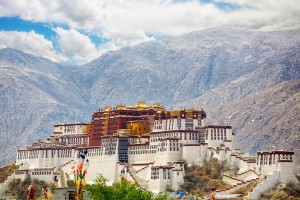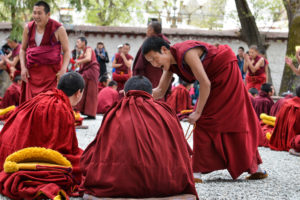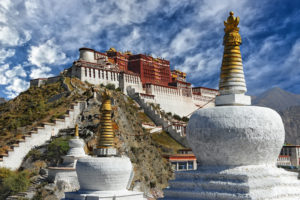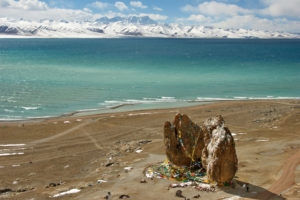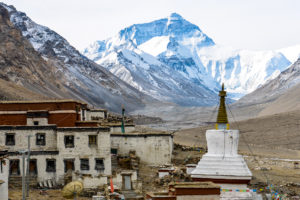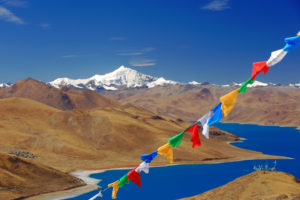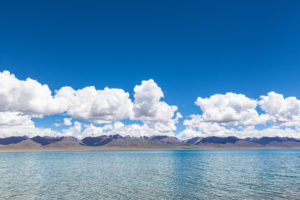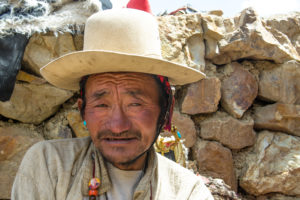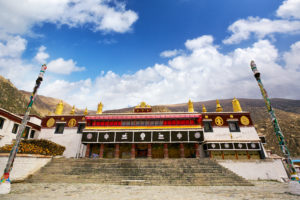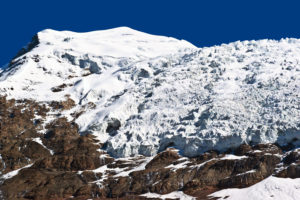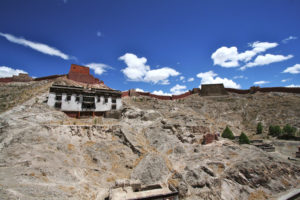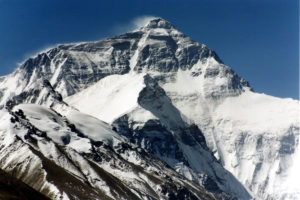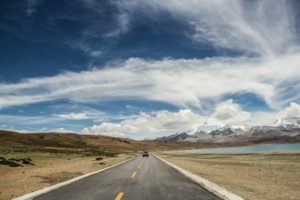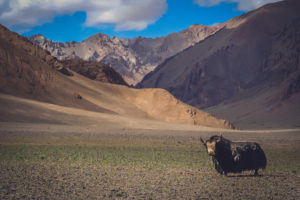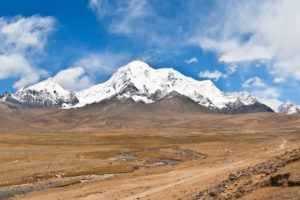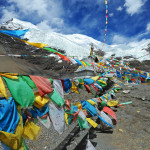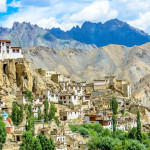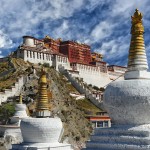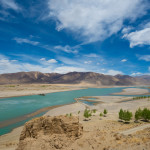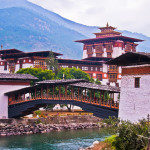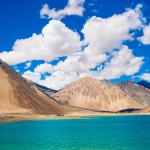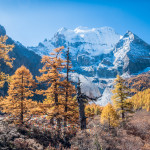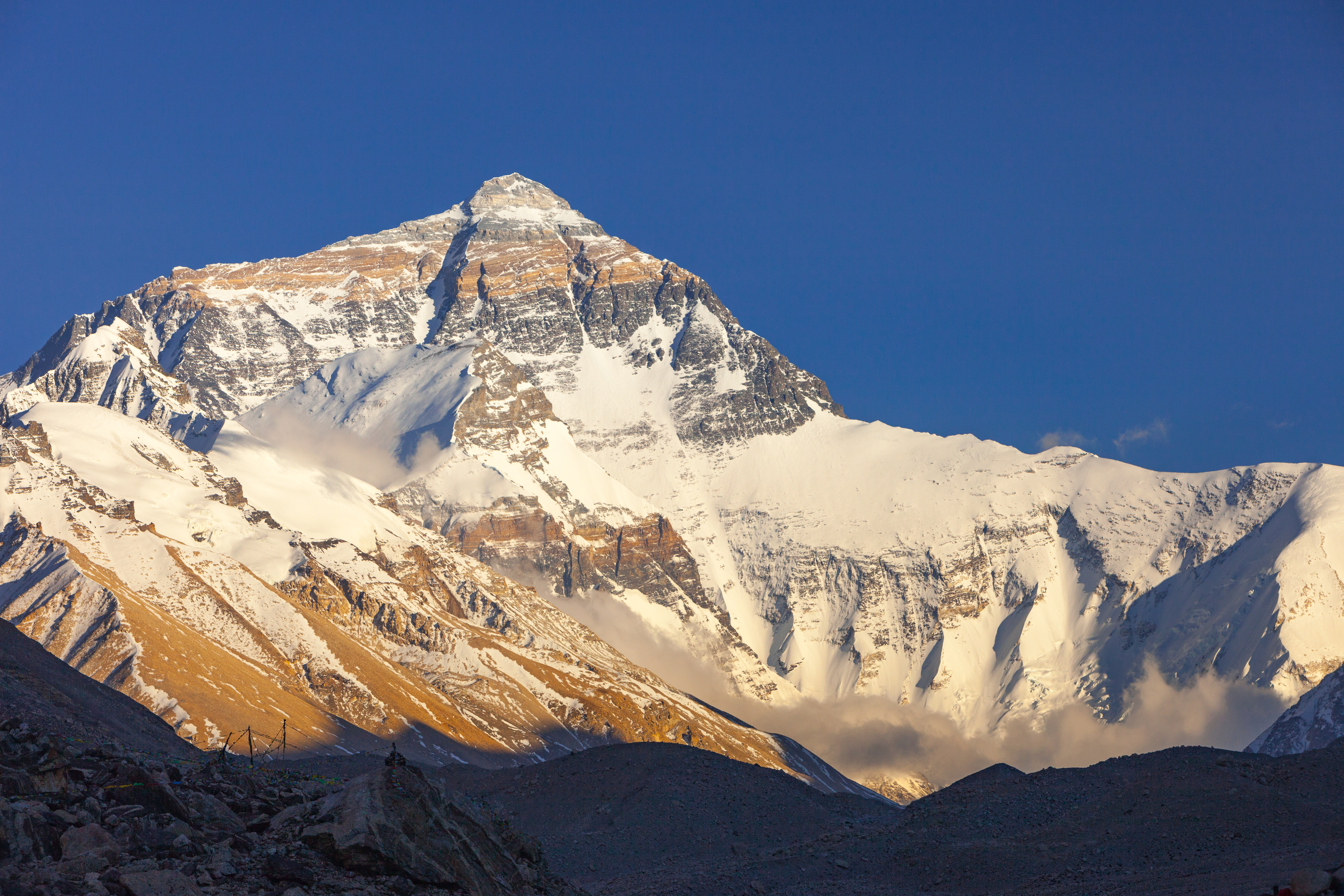
The journey from Lhasa to Everest Base Camp and Nam Tso Lake will take you from the Buddhist holy city of Lhasa to pristine high altitude lakes, rivers, glaciers, farming valleys and through the Himalaya’s to Everest Base Camp at an altitude of nearly 5200 meters/17,000 feet. From there, you will go to Nam Tso, one of the largest and most beautiful lakes in Tibet. In the Buddhist holy city of Lhasa, you will rub shoulders with pilgrims while going through the Jokhang, the most famous temple in the Himalaya. You will wander through the Potala Palace as well as the massive monasteries of Sera and Drepung.
From Lhasa, you will go the to turquoise-colored lake of Yamdrok and the amazing Karo La Glacier before arriving in the town of Gyantse. Then you will go to Tibet's second largest city, Shigatse, and go through Tashi Lhunpo Monastery. From there, the destination is Everest! At Everest Base Camp, you will get up close and personal with the world’s highest peak. You will also visit Rongphu, the highest elevation monastery in the world.
After your time at Everest Base Camp, you will return to Shigatse for another night before going thru northern Tibet to the small town of Damshung (Damxung). Along the way, you will see more amazing mountain scenery and explore some nomadic areas and grasslands, which are home to large yak herds. Damshung is the closest town to Nam Tso Lake. After a night in Damshung, you will continue on to Nam Tso, a spectacular lake surrounded by the snow-covered Nyenchen Tanglha Mountains. You will spend the night along the lakeshore before returning to Lhasa, where your journey will end on the morning of the 12th day.
Contact us for more details at: info@himalayajourney.com
Day 1: Lhasa Elevation: 3600 meters
Arrive in Lhasa. When you arrive to Lhasa, you will be met by your guide and transported to your hotel. You can spend the afternoon wandering around the Barkhor, Tibet’s ancient market area that surrounds Jokhang Temple. Each day thousands of Buddhist pilgrims make their way around this sacred temple.
Day 2: Lhasa
You will explore the Jokhang, the holiest Buddhist temple in the Himalaya’s. Founded nearly 1400 years ago, Jokhang Temple houses the most sacred statue of Buddha. You will work your way through this fascinating temple alongside Buddhist pilgrims from the faraway regions of Tibet. The sound of pilgrims chanting mantras fills the air as does the smell of yak butter candle offerings. In the afternoon, you will go to the 600 year old Sera, one of Tibet’s largest Buddhist monasteries. Each weekday afternoon starting at 3pm, monks engage in Buddhist philosophy debates, which are fun to photograph.
Day 3: Lhasa
You will start the day by exploring the Potala Palace, Tibet’s most iconic building. Towering above Lhasa with more than 1000 rooms, the Potala Palace served as the winter residence of the Dalai Lama’s for hundreds of years. After lunch, you will go to Drepung, another of Tibet’s huge monastic complexes. The pilgrimage circuit around Drepung takes about an hour or so and offers spectacular views.
Day 4: Lhasa—Yamdrok Lake—Karo La Glacier—Gyantse Distance: 260kms Elevation: 3980m
After breakfast, you will hit the road and begin the next part of your Tibet adventure. From Lhasa, you will drive along the scenic Kyi Chu River Valley and then ascend to the top of the 4794 meter Kamba La Pass, which has a breathtaking view of Yamdrok Lake and 7191 meter Mt. Nojin Kangtsang. You will then descend and drive along the lakeshore before making your way back up to the Karo La, a beautiful glacier that comes down almost to the roadside. In the late afternoon, you will arrive in Gyantse.
Day 5: Gyantse Pelkhor Monastery—Shigatse—Tashi Lhunpo Monastery Distance: 90kms Elevation: 3840m
You will begin by exploring Pelkhor Chode Monastery and the Kumbum Stupa, the largest Buddhist pagoda in Tibet. This beautiful monastery lies within a walled complex in the Gyantse Old Town. A short hike to the top of the wall offers an excellent panoramic view of the monastery, town and the snow-covered mountains in the distance. Afterwards, you will make the short drive to Shigatse, Tibet’s second largest city. Along the way from Gyantse to Shigatse, you can stop at a couple of interesting farming villages to experience traditional Tibetan culture. In Shigatse, you will visit the huge monastery of Tashi Lhunpo. The excellent pilgrimage route around the monastery takes about an hour and has fantastic views.
Day 6: Shigatse—Gyatso La Pass—Farming Villages—Shelkar Distance: 240kms Elevation: 4315m
Today’s destination is the small town of Shelkar, located in the Everest Region. Along the way to Shelkar, you will see more farming villages and beautiful landscapes. You will cross over the 5248 meter Gyatso La Pass, which has great views of the Himalaya Mountains. That afternoon you will arrive in the small town of Shelkar to stay the night.
Day 7: Shelkar—Rongphu Monastery—Everest Base Camp Distance: 120kms Elevation: 5150m
In the morning you will begin driving up the 5050 meter Pang La Pass. On clear days, this pass offers a stunning panoramic view of the Himalaya’s. You can see four 8000 meter peaks from this pass including Cho Oyu, Makalu, Lhotse and Everest. You will continue on to Rongphu, the highest monastery in the world at just under 5000 meters. Rongphu has an unbelievable view of Everest! From Rongphu, you will then go to Everest Base Camp to stay the night while gazing out to the world’s highest peak.
Day 8: Everest—Farming Villages—Shigatse Distance: 350kms Elevation: 3840m
After watching the sun rise on Mt. Everest, you will begin the journey back to Shigatse. You will stop at some farming villages as well as the small farming town of Lhatse. You will arrive in Shigatse with enough time to explore the main market street there or to hike the pilgrimage path at Tashi Lhunpo Monastery again.
Day 9: Shigatse—Nyenchen Tanglha Mountains—Damshung Distance: 325kms Elevation: 4285m
This day you will begin the journey to the Nam Tso Lake region. From Shigatse, your route will turn north towards the Nyenchen Tanglha Mountain Range. In the summer months, nomadic Tibetans can be seen along this route herding their herds of yaks. In the late afternoon/early evening, you will arrive to the small town of Damshung (Damxung) where you will spend the night before continuing on to Nam Tso Lake.
Day 10: Damshung—Nam Tso Lake Distance: 65 kilometers Elevation: 4730m
In the mid to late morning, you will make the short drive from Damshung to Nam Tso, one of Tibet's largest and most beautiful lakes. You will spend the night at a basic guesthouse close to the lake shore. Nearby is the small monastery of Tashi Do, which has a great 3½ kilometer (2 mile) pilgrimage circuit around it. You can spend the rest of the day doing some day hiking or simply enjoying the fantastic views of the lake, which looks out to the snow-covered Nyenchen Tanglha Mountains.
Day 11: Nam Tso Lake—Lhasa Distance: 235 kilometers Elevation: 3600 meters
Your last full day in Tibet will take you from Nam Tso Lake back to Lhasa, the Tibetan capital city. You will arrive back to Lhasa with plenty of time to pick up any last minute souvenirs you may want and walk around the Jokhang and Lhasa Old Town.
Day 12: Depart Tibet
This day you will be transported to the Lhasa Airport or Lhasa Train Station and depart Tibet.
Lhasa to Everest Base Camp and Nam Tso Lake
The journey from Lhasa to Everest Base Camp and Nam Tso Lake can be done from April thru October each year. This itinerary can be modified or customized to your preference.
To book this journey, send an email to: info@himalayajourney.com
We can arrange this journey for groups of clients between 2 people and 12 people. For booking details, email us at: info@himalayajourney.com
Included in the price:
- All accommodations (based on double occupancy)
- Breakfast each morning in Tibet
- Bottled drinking water each day
- All ground transportation in Tibet
- All entrance fees for the itinerary listed
- All Tibet travel permits
- All Everest permits
- Local Tibetan guide fees
- All meals and accommodations for your driver and guide
- Lhasa Airport or train station pick up and drop-off
Not included in the price:
- Passport and Chinese Visa fees
- International airfare to/from Lhasa, Tibet
- Lunch and dinner
- Travel vaccinations
- Insurance (travel, medical, etc)
- Souvenirs or personal items such as laundry, snacks, alcohol drinks, etc
- Photography fees inside temples and monasteries
- Gratuities to the Tibetan guide and driver
Travel Gear: Upon joining, each participant will be sent a list of required and recommended gear for this journey that they will be responsible for.
Accommodations: In Lhasa, Gyantse and Shigatse, you will be staying in comfortable and pleasant boutique or 3 Star Tibetan-owned hotels. Hotels in other areas of Tibet will be the best available. At Everest Base Camp, accommodation will be either simple tent hotels or a simple guesthouse with no showers and only shared bathrooms. At Nam Tso Lake, hotels are limited to basic guesthouses that have no showers and only shared bathrooms All hotels, except for those in the Everest and Nam Tso regions, should have internet access. Hotel upgrades available in Lhasa upon request.
Meals: Breakfast is included in the price for each morning you are in Tibet. Lunch and dinner are not included in the price.
Eligibility: Participants must be in good health and be able to spend each day walking around towns, villages and monasteries. Though you will be doing a lot of walking each day, no trekking is required. Most of this tour will take place in mountainous terrain between 3600 meters and 5200 meters (11,800 feet to 17,000 feet) above sea level. You will spend 3 nights in Lhasa for altitude acclimatization before going above 3600 meters. Ascent will be slow and gradual along the way from Lhasa to Everest Base Camp.
Responsible Tourism: Himalaya Journey is foreign-owned, but Tibetan staffed. All of our guides and drivers are local Tibetans who have been working in tourism for many years. It is a top priority for us to support as many Tibetan-owned businesses as possible. During this tour, all of the hotels you will be staying at in Tibet are locally-owned. The preservation of the culture of Tibet, as well as the protection of the environment of Tibet, are extremely important to us. In fact, when we are not out leading and arranging journeys across Tibet, we are working with local Tibetans in numerous eco-tourism and conservation projects.

